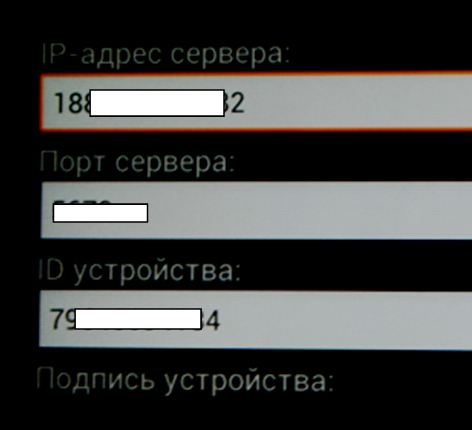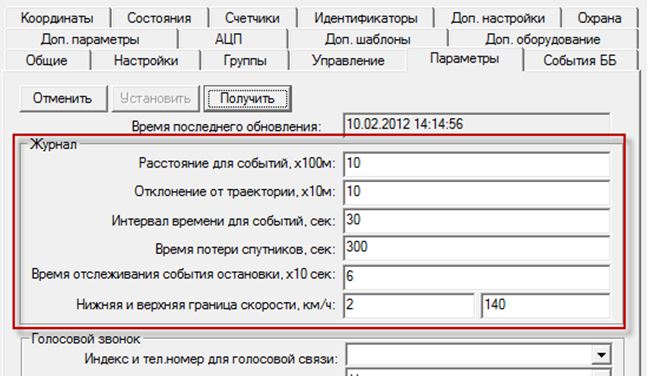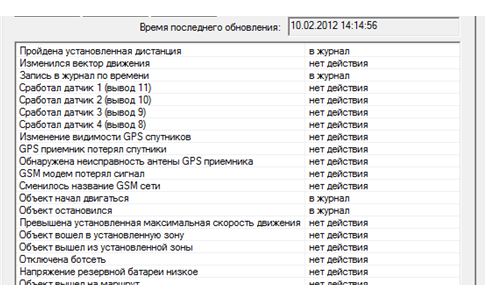Using the Android Tablet PC as a Personal GPS Tracker
Some time ago, one of our customers was puzzled by the control of the location of employees. GPS people are usually used to monitor people. These are miniature devices that allow remote monitoring of the location of the object, by determining the geographical coordinates and sending this data via GSM channels. In most cases, the trackers are also equipped with an alarm button and the ability to make calls to 1 or more programmed telephone numbers. But the customer refused to equip employees with such trackers due to the fact that tracking was supposed to be carried out for sales representatives who were already equipped with tablet PCs with GPS and GSM, i.e. by themselves could serve as trackers.
The case is left for small - to write a program for Android OS, which could transmit the programmed geo-dependent events to the server and further to the dispatcher. First of all, it is the transfer of coordinates through a time interval, the transfer of coordinates depending on the distance traveled, stopping and parking, being on objects.
And such a program was implemented for the customer’s devices - ViewSonic ViewPad 7 and Huawei MediaPad tablets. Although the development process has been tested much more devices, among which were smartphones and tablets, which had different displays, processors, batteries and operating system versions. A number of problems were associated with this diversity, which I would like to talk about.
GPS The quality of GPS reception and satellite search was very different from model to model. The above ViewSonic and Huawei devices (and many others) coped well with the task, but there were models that, in principle, could not establish normal reception of signals and constantly lost satellites, thus the loss of navigation for some was 90% or more, which makes it impossible to work device as a tracker.
')
OS version and device model. The program was originally developed for Android 2, as a result, it worked on versions 3 and 4, but required checking each time and, if necessary, a separate revision. In addition, it could not work on individual models with the specified version, while working on others. Therefore, we had to agree with the customer that the correct operation of the program is guaranteed on specific tablet models with a specific OS version.
Battery capacity. This is generally a megaproblem for all such devices. Modern smartphones are equipped with a 1800-2200 mAh battery, which some active users lack even for a day, while they almost never use GPS. Therefore, such a smartphone is almost not suitable for full-fledged work as a tracker for a whole day - the battery is in GPS mode always on, sending GPRS packets with coordinates every minute and actively using the device “for its intended purpose” (games, music, video, voice communication, use Wi-Fi) usually lives a maximum of 4-5 hours. But with the tablet situation is a little better. Their battery is more capacious. For example, at ViewSonic - 3240 mAh, at Huawei - 4100 mAh. As a result, tests showed that the first in GPS mode and sending coordinates once every 60 seconds lasted 22 hours, the second - 27.5 hours, more than a day of continuous work. At the same time, the screen was practically not turned on, work with other programs was not conducted and telephone calls were not made. As you know, the most voracious consumer of electricity is the screen. Therefore, the same test was carried out with the screen on. And in this case, a good result was obtained - almost 7 hours of work with a constantly on screen on the ViewSonic and a little more from Huawei at the maximum level of brightness. This is a very good result, considering that no one is looking at the tablet screen for 7-8 hours in a row, playing Angry birds or watching a regular series, one has to work when.
However, these indicators can both improve and worsen. It also depends on the programs and power management algorithms. The operating time in the same mode for different devices with the same battery capacity may differ by one and a half times. Therefore, to increase the working time, you need to try to use the original or third-party power management programs and tablet power saving modes. And finally, some devices allow you to use a high-capacity battery, a docking station, etc., which also should not be neglected.
In any case, with such developments, it is best to focus on a specific model of the device or create a compatibility list, having previously checked the performance of specific samples.
The program Gpstracker from the point of view of the user is completely simple and easy.

For the program to work, you must specify the IP server, port and device ID. This is required for the device to communicate with the server. Further, the user should only enable and disable the program independently. This cannot be done automatically, because Non-system services can not access the GPS activation in the smartphone, so you have to introduce administrative regulations for working with the tablet. All other settings are made directly in the system administration program. Here you can set event parameters: distance for events, deviation from the trajectory, time interval for events, satellite loss time, stop event tracking time, lower and upper speed limits.

And sending relevant events to the dispatcher

In this case, the phrase "logged" means sending an event via GPRS. In the absence of GPRS communication, the event is placed in the log (in the internal memory of the device), and is sent as the communication channel is resumed.
Further development of the employee monitoring system - binding events to objects. Those. the manager or dispatcher will see at what time what objects (outlets) are visited, the time spent at these points and the travel time. In addition, the proposed route and places of visit can be thrown off by the employee in advance, as well as it will be possible to set the priority of objects (for example, some objects need to be reached today, and for some as far as possible) and time (for example, 2 objects from 5 you need to get at a certain time, the rest - during the day). This will greatly enhance the capabilities and efficiency of the system, and can be applied to a wider range of consumers (for example, for online stores where it is necessary to balance the load of couriers and at the same time respond to customer requirements). In general, mass devices with GPS have a high potential for applications in industry and business, and over time we will have more interesting projects using individual GPS devices. We will definitely acquaint you with similar projects and solutions.
The case is left for small - to write a program for Android OS, which could transmit the programmed geo-dependent events to the server and further to the dispatcher. First of all, it is the transfer of coordinates through a time interval, the transfer of coordinates depending on the distance traveled, stopping and parking, being on objects.
And such a program was implemented for the customer’s devices - ViewSonic ViewPad 7 and Huawei MediaPad tablets. Although the development process has been tested much more devices, among which were smartphones and tablets, which had different displays, processors, batteries and operating system versions. A number of problems were associated with this diversity, which I would like to talk about.
GPS The quality of GPS reception and satellite search was very different from model to model. The above ViewSonic and Huawei devices (and many others) coped well with the task, but there were models that, in principle, could not establish normal reception of signals and constantly lost satellites, thus the loss of navigation for some was 90% or more, which makes it impossible to work device as a tracker.
')
OS version and device model. The program was originally developed for Android 2, as a result, it worked on versions 3 and 4, but required checking each time and, if necessary, a separate revision. In addition, it could not work on individual models with the specified version, while working on others. Therefore, we had to agree with the customer that the correct operation of the program is guaranteed on specific tablet models with a specific OS version.
Battery capacity. This is generally a megaproblem for all such devices. Modern smartphones are equipped with a 1800-2200 mAh battery, which some active users lack even for a day, while they almost never use GPS. Therefore, such a smartphone is almost not suitable for full-fledged work as a tracker for a whole day - the battery is in GPS mode always on, sending GPRS packets with coordinates every minute and actively using the device “for its intended purpose” (games, music, video, voice communication, use Wi-Fi) usually lives a maximum of 4-5 hours. But with the tablet situation is a little better. Their battery is more capacious. For example, at ViewSonic - 3240 mAh, at Huawei - 4100 mAh. As a result, tests showed that the first in GPS mode and sending coordinates once every 60 seconds lasted 22 hours, the second - 27.5 hours, more than a day of continuous work. At the same time, the screen was practically not turned on, work with other programs was not conducted and telephone calls were not made. As you know, the most voracious consumer of electricity is the screen. Therefore, the same test was carried out with the screen on. And in this case, a good result was obtained - almost 7 hours of work with a constantly on screen on the ViewSonic and a little more from Huawei at the maximum level of brightness. This is a very good result, considering that no one is looking at the tablet screen for 7-8 hours in a row, playing Angry birds or watching a regular series, one has to work when.
However, these indicators can both improve and worsen. It also depends on the programs and power management algorithms. The operating time in the same mode for different devices with the same battery capacity may differ by one and a half times. Therefore, to increase the working time, you need to try to use the original or third-party power management programs and tablet power saving modes. And finally, some devices allow you to use a high-capacity battery, a docking station, etc., which also should not be neglected.
In any case, with such developments, it is best to focus on a specific model of the device or create a compatibility list, having previously checked the performance of specific samples.
The program Gpstracker from the point of view of the user is completely simple and easy.

For the program to work, you must specify the IP server, port and device ID. This is required for the device to communicate with the server. Further, the user should only enable and disable the program independently. This cannot be done automatically, because Non-system services can not access the GPS activation in the smartphone, so you have to introduce administrative regulations for working with the tablet. All other settings are made directly in the system administration program. Here you can set event parameters: distance for events, deviation from the trajectory, time interval for events, satellite loss time, stop event tracking time, lower and upper speed limits.

And sending relevant events to the dispatcher

In this case, the phrase "logged" means sending an event via GPRS. In the absence of GPRS communication, the event is placed in the log (in the internal memory of the device), and is sent as the communication channel is resumed.
Further development of the employee monitoring system - binding events to objects. Those. the manager or dispatcher will see at what time what objects (outlets) are visited, the time spent at these points and the travel time. In addition, the proposed route and places of visit can be thrown off by the employee in advance, as well as it will be possible to set the priority of objects (for example, some objects need to be reached today, and for some as far as possible) and time (for example, 2 objects from 5 you need to get at a certain time, the rest - during the day). This will greatly enhance the capabilities and efficiency of the system, and can be applied to a wider range of consumers (for example, for online stores where it is necessary to balance the load of couriers and at the same time respond to customer requirements). In general, mass devices with GPS have a high potential for applications in industry and business, and over time we will have more interesting projects using individual GPS devices. We will definitely acquaint you with similar projects and solutions.
Source: https://habr.com/ru/post/151763/
All Articles